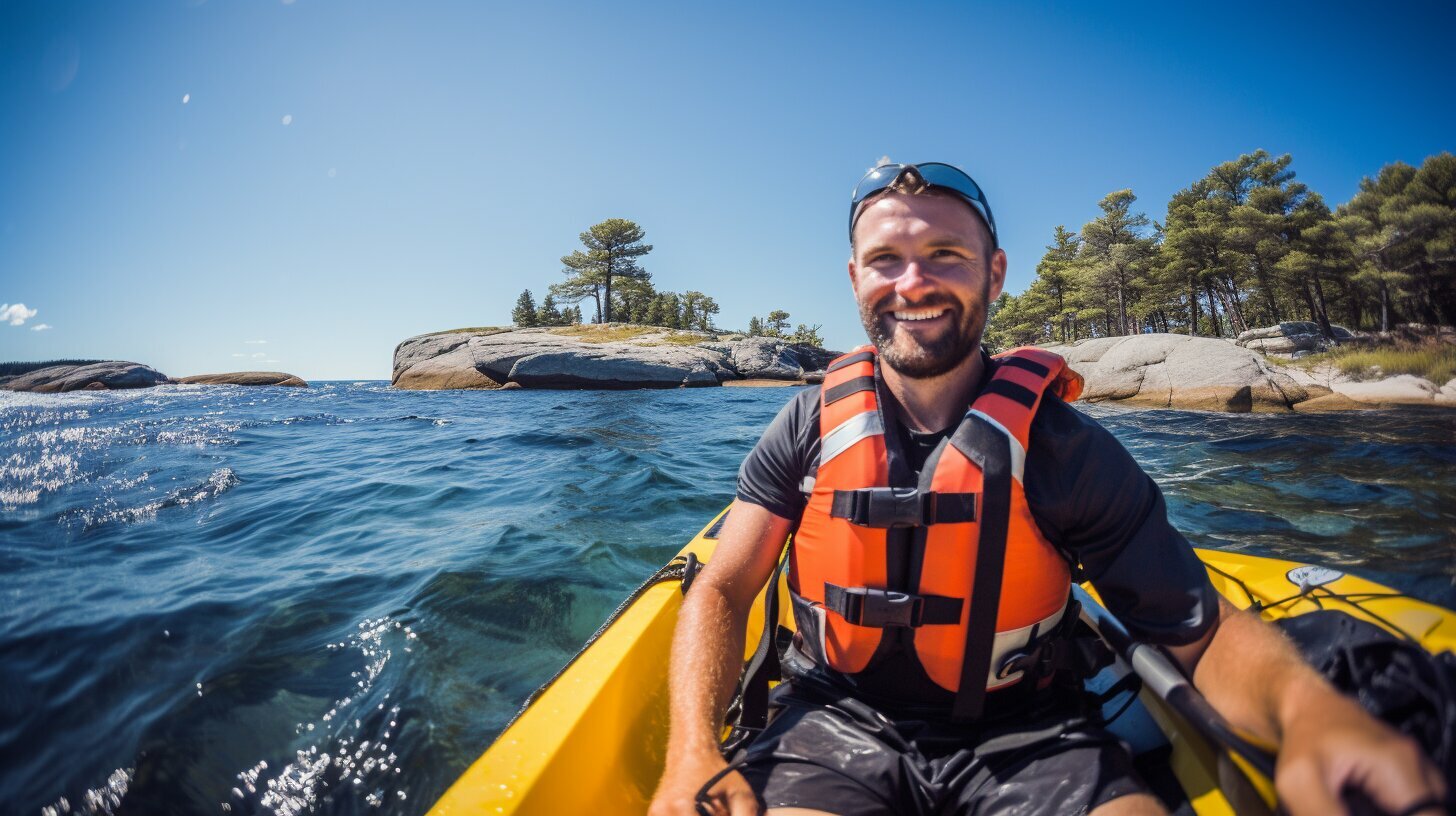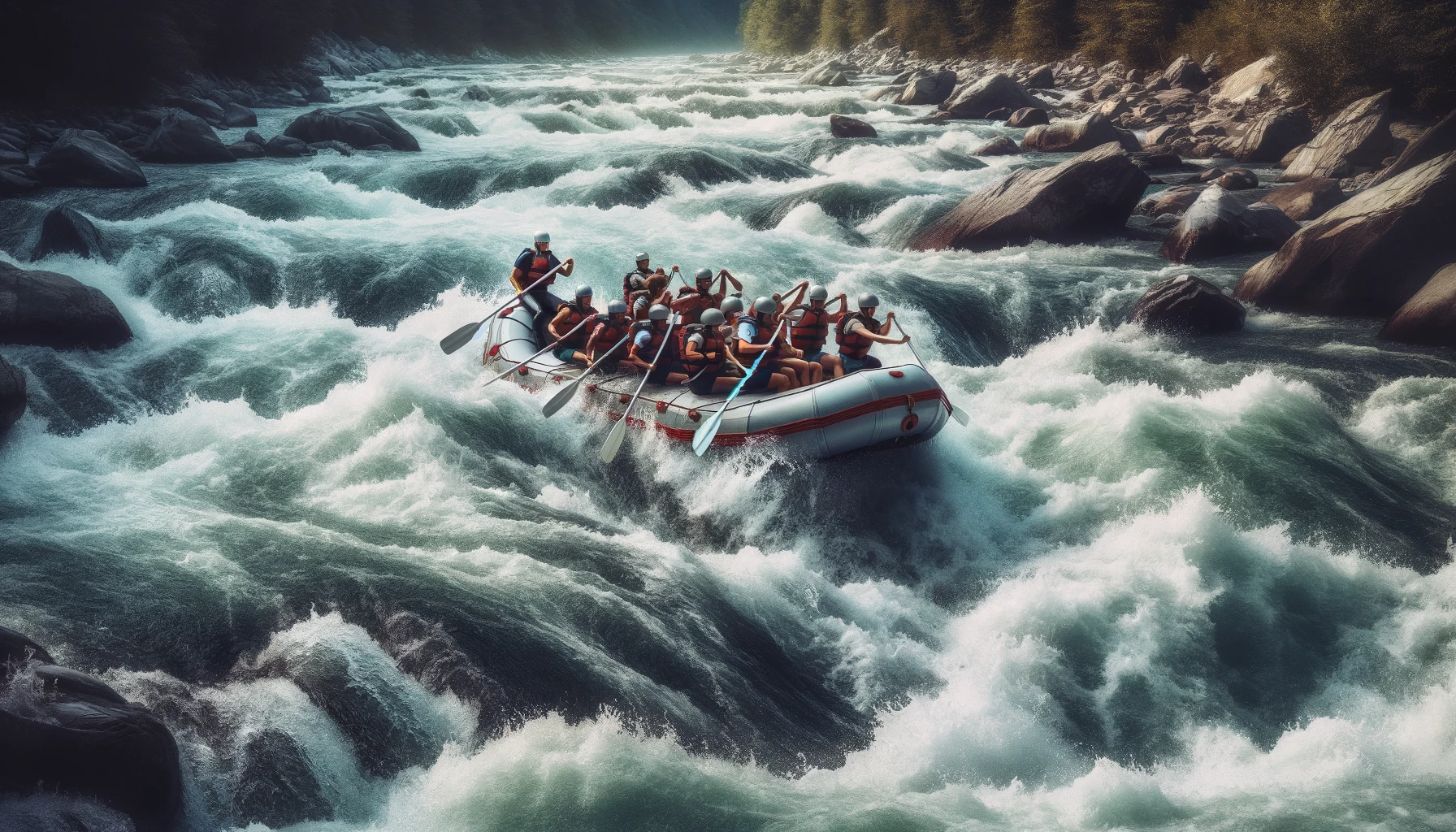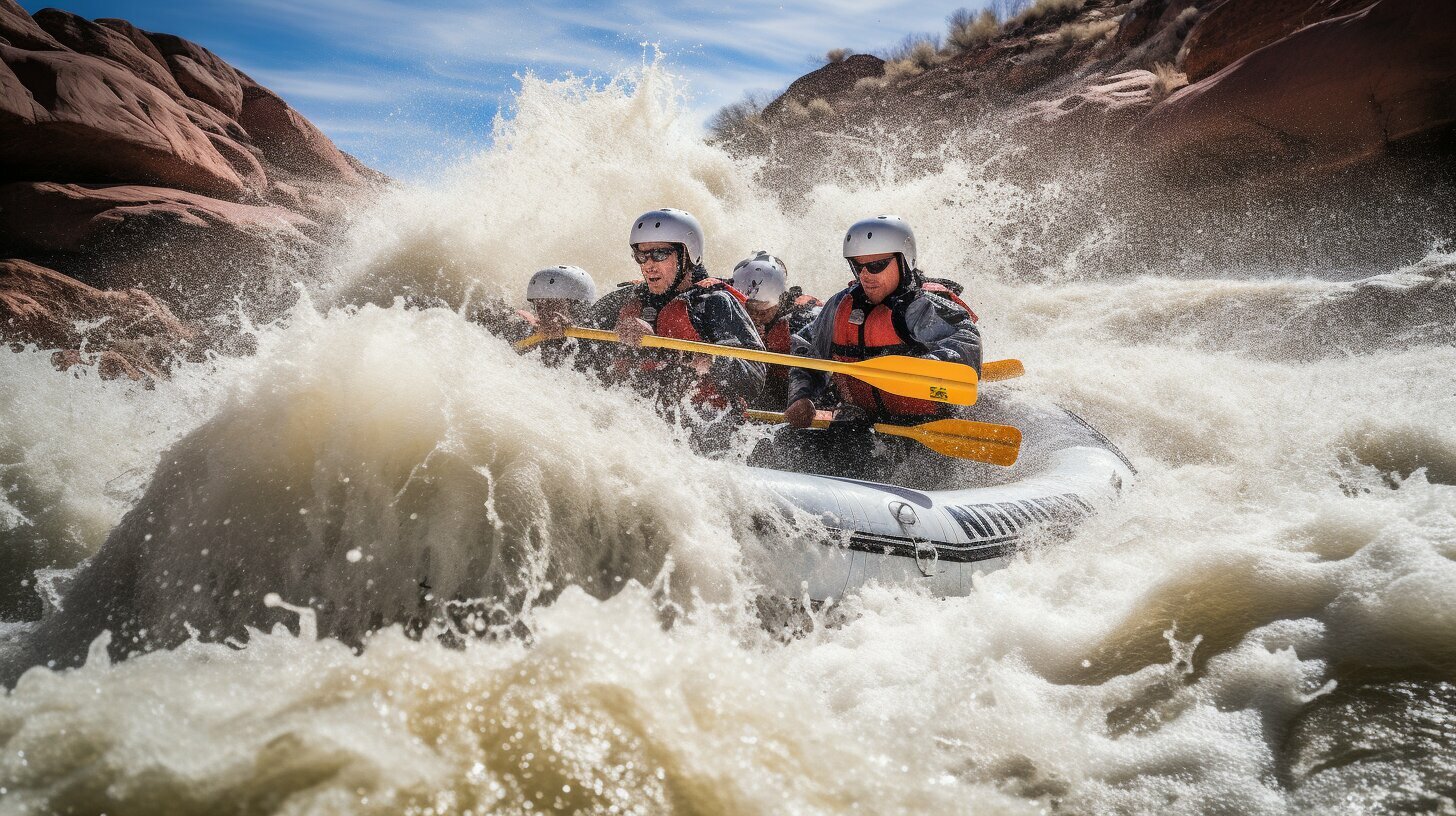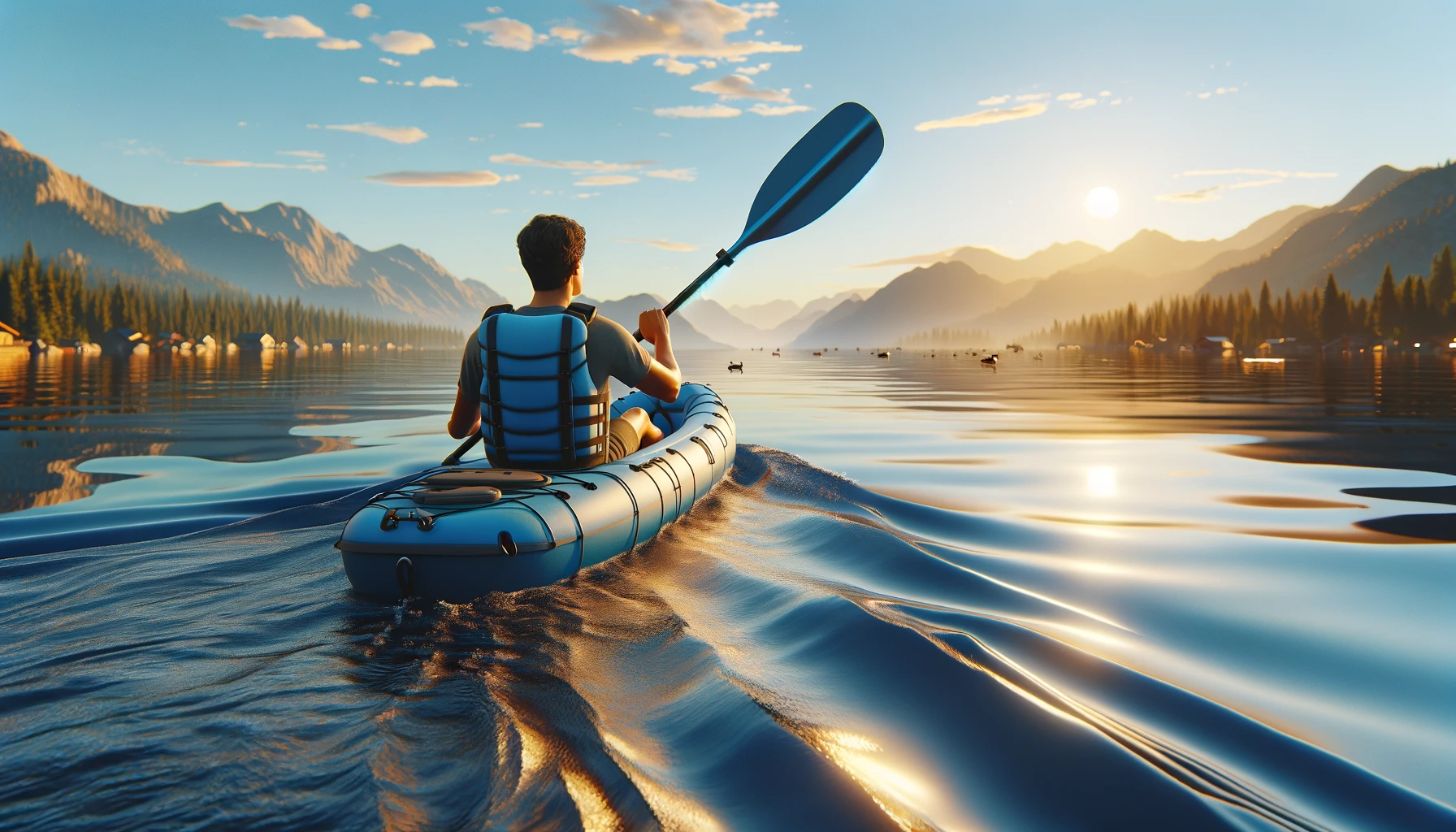Are you ready for your next kayaking adventure? Before you hit the water, it’s crucial to understand the importance of kayaking safety. Whether you’re a beginner or an experienced kayaker, knowing the essential safety tips can make all the difference in ensuring your safety and enjoyment on the water.
In this article, we’ll cover the foundational safety measures, such as choosing the right kayak and wearing appropriate safety gear, as well as advanced techniques for navigating hazards and handling emergencies. Our goal is to equip you with the knowledge and skills necessary to have a safe and enjoyable kayaking experience.
Key Takeaways
- Kayaking safety is crucial for a safe and enjoyable experience on the water.
- Essential safety tips include choosing the right kayak, wearing appropriate safety gear, and understanding basic paddling techniques.
- Advanced safety measures include assessing weather and water conditions, equipping yourself for the journey, navigating hazards, and handling emergencies.
Understanding the Basics of Kayaking Safety
Before embarking on your kayaking adventure, it’s essential to understand the basics of kayak safety. As a beginner, there are certain kayak safety precautions that you must know to ensure your safety on the water. Here are some must-know safety tips for kayak trips:
- Choose the right kayak: The type of kayak you choose will depend on the kind of water you plan to paddle on. For calm waters such as lakes and ponds, a recreational kayak would suffice, while for rough waters such as rapids, a whitewater kayak would be ideal. Ensure your kayak is the right size for you, and always check its condition before boarding.
- Wear appropriate safety gear: Always wear a personal flotation device (PFD) while kayaking. The PFD should fit snugly and comfortably, and be suitable for the type of water you plan to paddle on. Also, wear protective clothing and footwear, and consider a helmet for more challenging kayaking experiences.
- Understand basic paddling techniques: It’s important to learn basic paddling techniques before hitting the water. This includes proper grip and stroke techniques, as well as how to steer and control your kayak. Practice in calm waters before attempting more challenging waters.
- Never kayak alone: Always buddy up with a friend or join a kayaking group for added safety. Inform someone of your kayaking plans and expected return time, and carry a communication device for emergencies.
By following these beginner kayaking safety tips, you can enjoy a safe and enjoyable kayaking experience. Next, we’ll discuss how to assess weather and water conditions before heading out on your kayaking trip.
Disclosure: When you buy through links on our site, we may earn an affiliate commission.

Assessing Weather and Water Conditions
Water safety should be a top priority for all kayakers, and assessing weather and water conditions before setting out on a trip is critical. Expert advice on kayaking safety recommends that you check the weather forecast before planning your trip, as inclement weather conditions can pose significant risks to kayakers.
Understanding water currents is also essential to ensure your safety while kayaking. Avoid kayaking in areas with strong or unpredictable currents, as they can easily cause accidents. Additionally, it is important to be aware of other potential risks, such as rocks, submerged trees, or debris that may be in the water.
It is crucial to obtain accurate and up-to-date information about conditions before heading out on your kayak trip. Being well-informed allows you to make proactive decisions and ensure your safety throughout your journey. Water safety tips for kayakers include carrying a personal flotation device (PFD) and a communication device to enable you to call for help in case of an emergency.
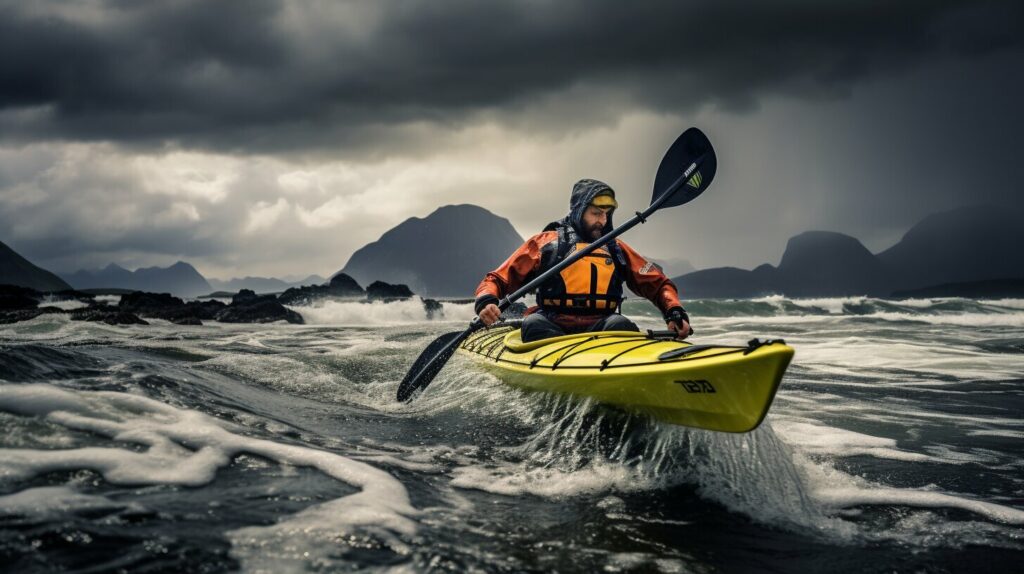
“Checking the weather forecast and understanding water currents is essential to ensure a safe kayaking experience. Always be well-informed and make proactive decisions to avoid potential risks.”
Properly Equipping Yourself for the Journey
When it comes to kayaking, having the right equipment and gear is essential for ensuring your safety. Before embarking on a kayaking journey, it’s important to take the time to prepare and equip yourself correctly.
The most important piece of safety equipment for kayaking is a personal flotation device (PFD). A PFD should fit comfortably, snugly hugging your body, and be worn at all times while kayaking. It is also important to choose a PFD that is appropriate for the type of kayaking you are doing and that meets the required safety standards.
In addition to a PFD, a paddle is required for kayaking. It’s important to select a paddle that is the correct length and weight for your body and kayaking style. A paddle that is too long or heavy can cause unnecessary strain and fatigue on your arms and shoulders.
Communication devices such as a whistle or air horn are also important for alerting others in case of an emergency. Keep these devices easily accessible and in good working condition.
It is also a good idea to bring along an emergency kit that includes a first-aid kit, a waterproof flashlight, a knife, and a spare paddle. Make sure to pack the kit in a waterproof container to keep it dry in case of unexpected events.
Finally, proper maintenance and storage of your kayaking gear is important for ensuring its longevity and effectiveness. Rinse off your gear with fresh water after each use and store it in a dry, cool place away from direct sunlight.
By following these important safety tips for kayaking and properly equipping yourself for your journey, you can ensure a safe and enjoyable experience on the water.
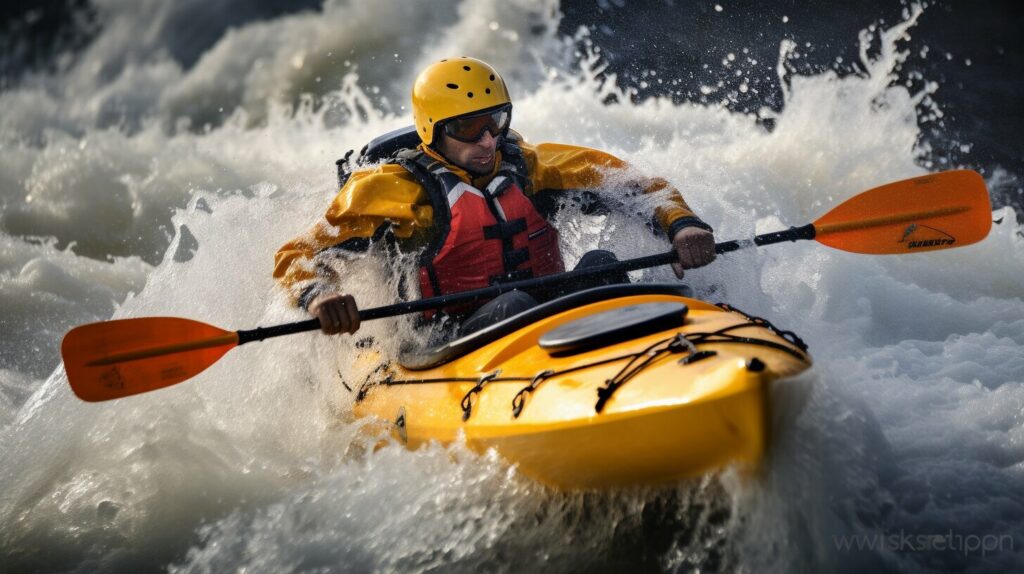
Navigating Hazards and Avoiding Accidents
When kayaking, it is essential to be aware of potential hazards and employ strategies to avoid accidents. Here are some important safety tips for kayakers:
1. Maintain Situational Awareness
Always be aware of your surroundings and stay alert to potential hazards such as rocks, rapids, and other watercraft. Pay attention to the weather and water conditions and adjust your plans accordingly. Avoid distractions such as using your phone or listening to music while kayaking as they can impact your situational awareness.
2. Navigate Around Obstacles
When approaching obstacles such as rocks or trees, it is important to steer around them. If you are unsure of how to do this, stop paddling and allow the current to carry you past the obstacle. Do not attempt to go over it or under it as this can pose a serious risk of injury.
3. Handle Rough Water Conditions
In rough water conditions, it is important to keep a low center of gravity and maintain a good grip on your paddle. Avoid sitting upright as it can lead to capsizing. Additionally, steer your kayak perpendicular to the waves to reduce the chance of being overturned.
4. Avoid Collisions
Always keep your distance from other watercraft and obey the rules of the waterway. If you need to cross in front of another vessel, do so quickly and at a safe distance. Make sure to signal your intentions and maintain eye contact with other boaters to ensure they are aware of your presence.
By following these important safety tips for kayakers, you can navigate hazards and avoid accidents on the water.
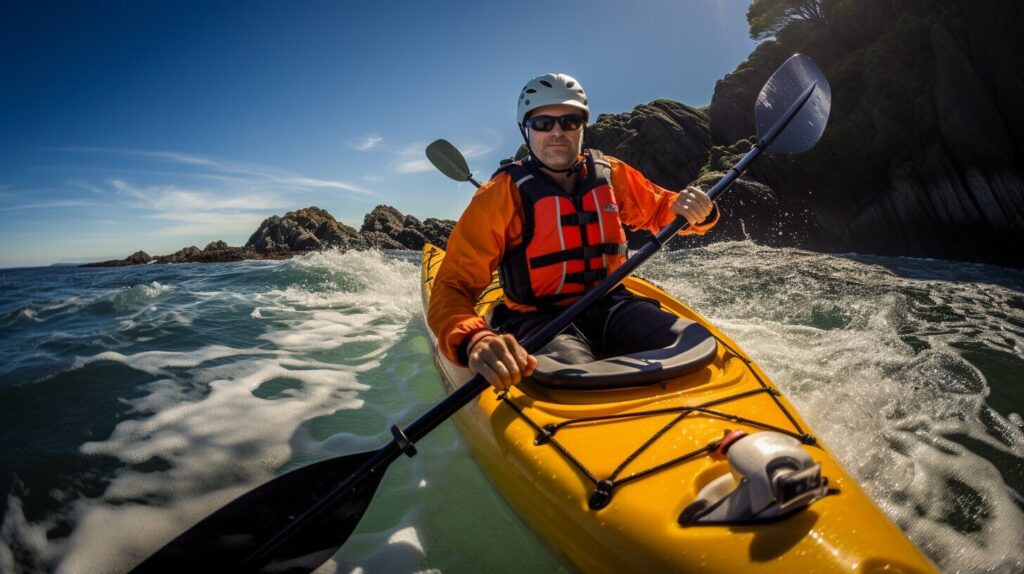
“Always be aware of your surroundings and stay alert to potential hazards such as rocks, rapids, and other watercraft.”
Rescue Techniques and Emergency Preparedness
As a kayaker, you may encounter unexpected situations that require you to use rescue techniques and emergency preparedness. It is essential to have expert advice on kayaking safety to help you handle such situations. Being prepared for emergencies can make the difference between a minor mishap and a major disaster.
One of the most critical skills you should have is self-rescue. Practice re-entering your kayak and paddling again, even in calm water conditions, to build muscle memory and increase comfort in an emergency situation. If you are kayaking with a group, it is important that everyone knows and practices the same techniques.
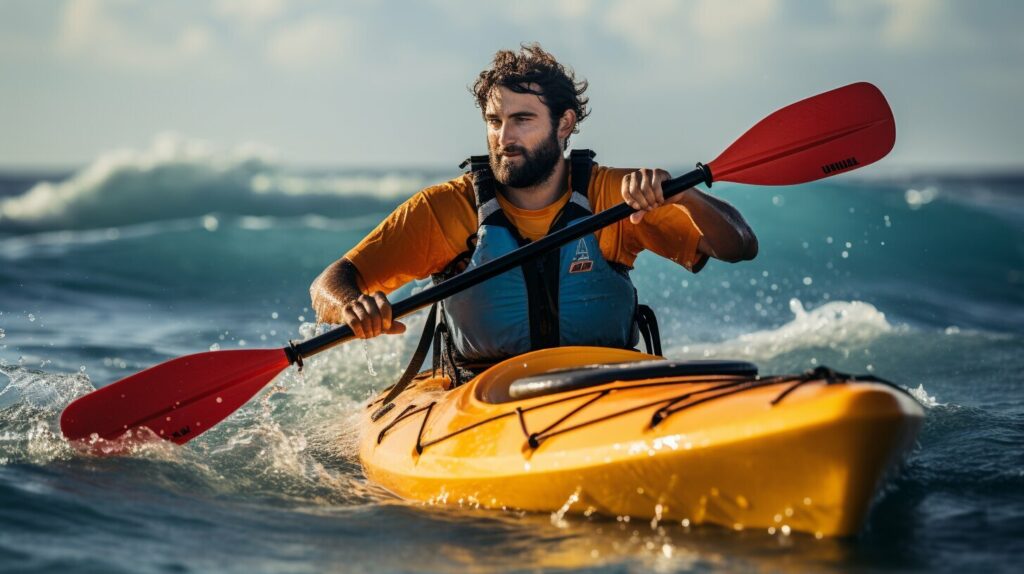
In case of a capsizing or getting stranded situation, having a signaling device, such as a whistle or flare, can help you attract attention. It’s also crucial to have a communication device, such as a cell phone or two-way radio, to call for help in an emergency.
If you encounter an emergency situation involving another kayaker, it is important to remain calm and assess the situation before taking action. Do not put yourself in danger while attempting to help someone else. Instead, use a throw bag or another rescue technique to assist them from a safe distance.
Remember to be aware of your surroundings, anticipate potential hazards, and assess risks before embarking on your kayaking trip. Always let someone know where you will be, and when you plan to return, before setting off on your adventure.
Staying Hydrated and Managing Fatigue
Staying hydrated and managing fatigue are essential kayaking safety tips that should not be overlooked. Dehydration and exhaustion can hamper your physical and mental abilities and increase the risk of accidents. It is recommended that you drink water frequently before, during, and after your kayaking trip to maintain optimal hydration levels. You can also carry an electrolyte solution to replenish lost minerals and salts.
When kayaking, take breaks frequently and pace yourself to avoid exhaustion. Paddling can be physically demanding, and your body needs sufficient rest to recover. If you begin to feel tired or weak, take a break and replenish your energy levels with water and snacks. Remember, your safety and well-being take precedence over the thrill of the adventure.
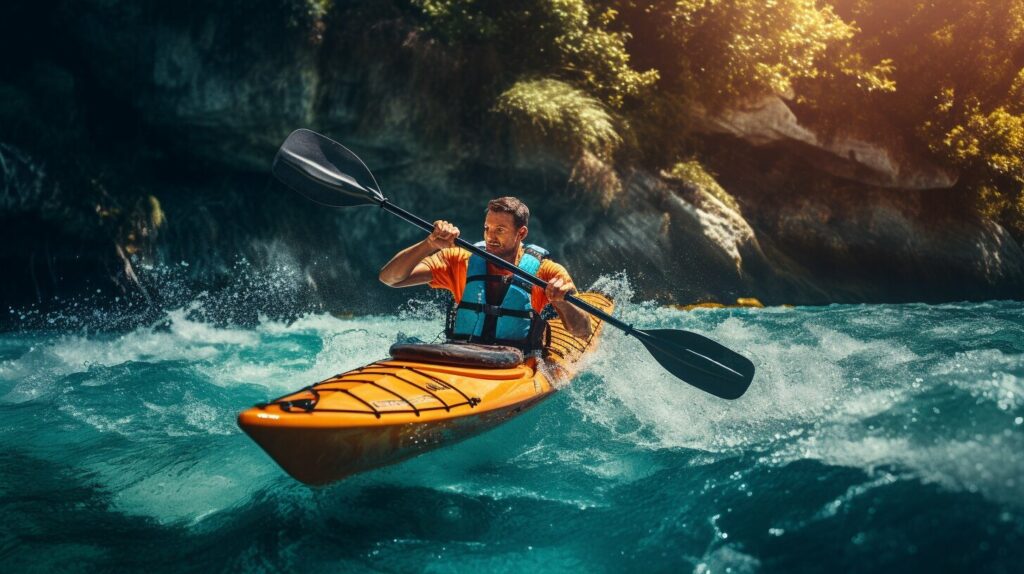
Always stay hydrated and manage fatigue to ensure a safe and enjoyable kayaking experience.
Respecting the Environment and Wildlife
As a responsible kayaker, it’s important to prioritize the well-being of the environment and wildlife around you. By practicing ethical behavior and minimizing your impact, you can help preserve these natural resources for future generations to enjoy.
When kayaking, avoid disturbing wildlife by maintaining a safe distance and refraining from feeding or touching them. Additionally, minimize your impact on the environment by properly disposing of trash and avoiding damaging plants or soil.
Consider choosing eco-friendly products and practices, such as using a reusable water bottle or opting for biodegradable sunscreen. By making conscious choices, you can reduce your environmental footprint and leave a positive impact on the world around you.
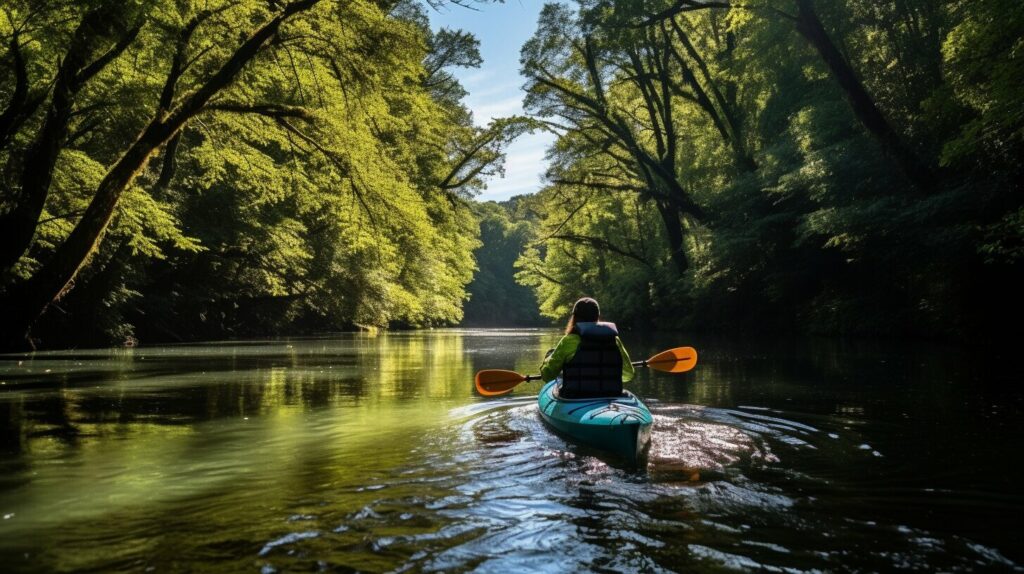
Conclusion
You have taken the first step in ensuring that your kayaking experience is both enjoyable and safe. Remember, kayaking can be an exciting and rewarding activity, but it is important to always prioritize safety.
Make sure you understand the basic safety measures and equip yourself with the right gear before embarking on a kayaking trip. Assess the weather and water conditions and be well-informed about the surroundings. Ensure that you have the necessary knowledge to navigate hazards and respond to emergencies.
Staying hydrated and managing fatigue is also crucial for your physical well-being and safety on the water. And as a responsible kayaker, always respect the environment and wildlife, and aim to minimize your impact on natural habitats.
So, what are you waiting for?
Get out there and make the most of your kayaking adventure! Remember to stay safe and responsible, and use the tips you have learned to enjoy a memorable experience on the water.
FAQ
Q: What are the essential kayaking safety tips?
A: The essential kayaking safety tips include wearing a personal flotation device (PFD), checking weather and water conditions before setting out, staying hydrated, avoiding alcohol and drugs, and knowing basic rescue techniques.
Q: How do I choose the right kayak?
A: When choosing a kayak, consider factors such as your skill level, intended use, and body type. Sit-on-top kayaks are great for beginners, while touring kayaks offer more speed and storage space.
Q: What safety gear should I wear while kayaking?
A: It is important to wear a properly fitting PFD, a helmet for whitewater kayaking, and appropriate footwear. Clothing should be quick-drying and provide protection from the sun.
Q: How can I assess weather and water conditions for kayaking?
A: Before heading out, check weather forecasts, wind speed, and water temperature. Be aware of potential hazards such as strong currents, tidal changes, and inclement weather.
Q: What equipment should I have for kayaking?
A: Essential equipment for kayaking includes a paddle, a whistle or other communication device, a bilge pump or sponge, and a first aid kit. It is also recommended to carry a spare paddle and a towline.
Q: How can I navigate hazards and avoid accidents while kayaking?
A: To navigate hazards, learn to read water conditions, avoid obstacles such as rocks or rapids, and maintain a safe distance from other watercraft. Practice proper paddling techniques and always be aware of your surroundings.
Q: What should I do in case of an emergency while kayaking?
A: In case of an emergency, stay calm and assess the situation. Practice self-rescue techniques, such as re-entering your kayak after capsizing. Carry a communication device, know how to call for help, and be prepared to assist others in need.
Q: How can I stay hydrated and manage fatigue while kayaking?
A: Stay hydrated by bringing enough water or electrolyte drinks with you. Take regular breaks, pace yourself, and fuel your body with nutritious snacks. Avoid overexertion and listen to your body’s signals of fatigue.
Q: How can I minimize my impact on the environment while kayaking?
A: Respecting the environment and wildlife is crucial. Avoid disturbing wildlife, stay on designated waterways, and pack out any trash. Follow ethical guidelines for wildlife encounters and help preserve natural habitats.

